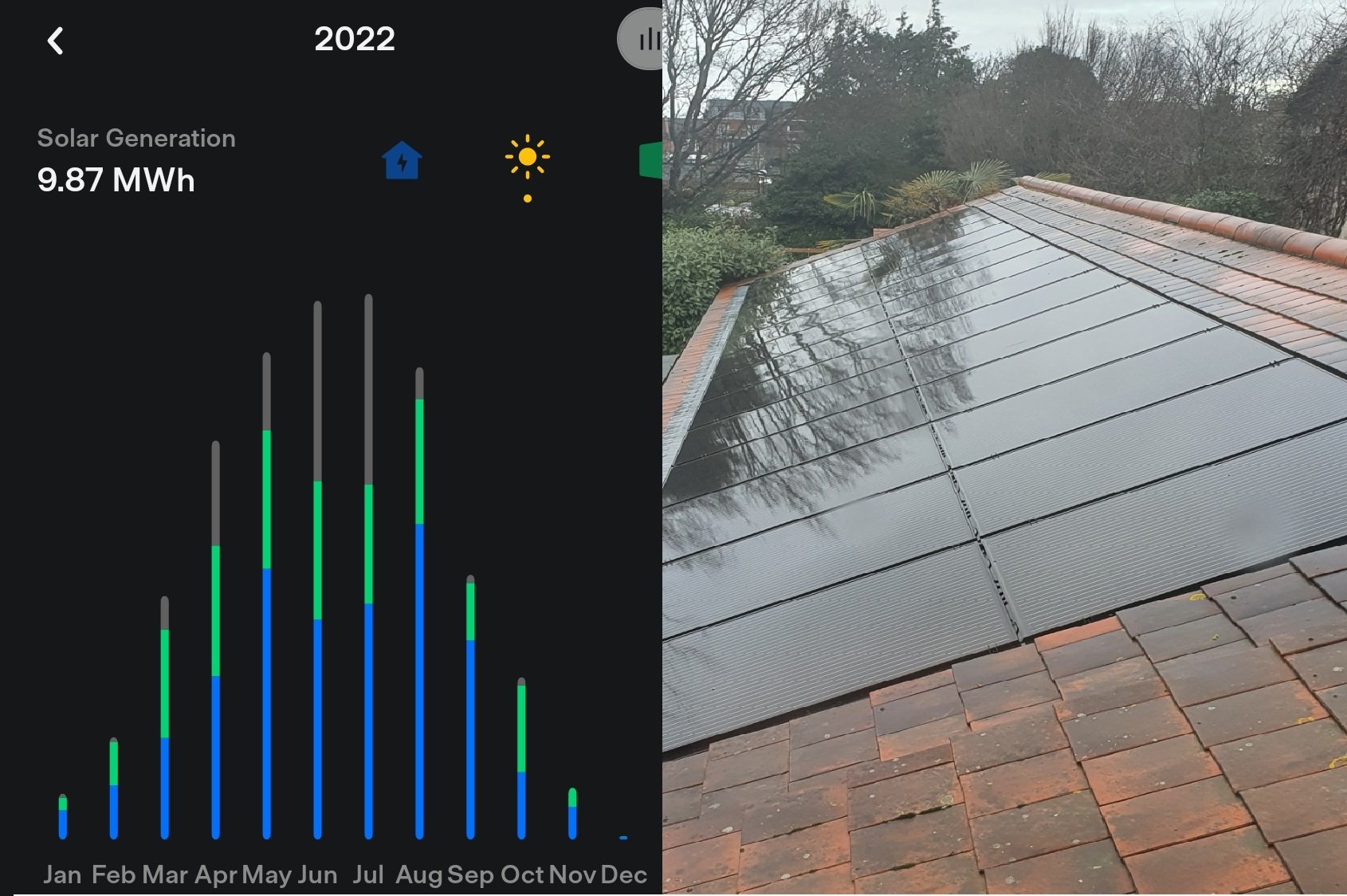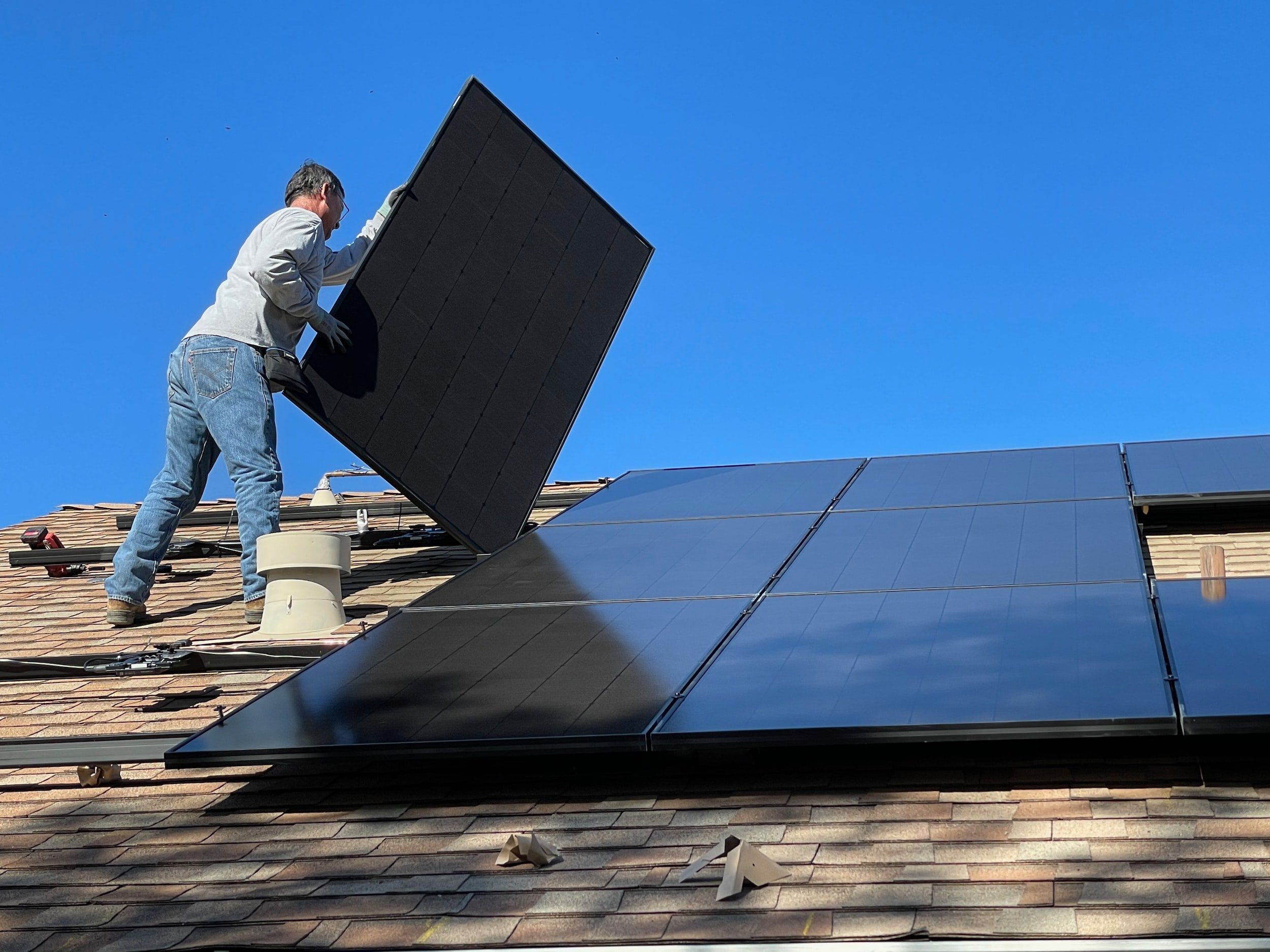Home Solar PV
Want to install Solar PV Panels on your house but don’t know where to start?
Here is our quick guide to help you understand: Is my house suitable for solar? Is it worth installing solar? How do I go about installing solar?
Is my house suitable for solar?
Your house will likely be eligible for solar if you have an area on your roof measuring 12 square metres or more, that is:
Accessible and clear of obstructions (chimneys, skylights etc)
Free from severe shading from nearby buildings and trees (small shading is okay)
Faces South, East, or West (if you live in the Northern Hemisphere)
Annual output of Solar PV Panels on the author’s west/east facing roof with partial shading located in the UK. Annual solar electricity generation of 9.87 MWh (9,870 kWh) from a roof space of 80 square metres (50 panels), investment payback 10 years (excluding incentives), average cost of electricity over the life of the install 13.5p per kWh (including a home battery). Output is highest in summer and lowest in winter.
Is it worth installing solar?
The financial benefits of solar mostly depend on 3 key factors: The amount of electricity generated, the cost of the system, and the price of electricity.
1) The amount of electricity generated, is determined by the amount of sunlight and available roof space. For a rough estimate use the following formula:
Ensure that the estimated solar generation is within your annual usage. The average house uses about 5,000 - 10,000 kWh (5-10 MWh) of electricity per year. Adding an electric car uses an additional 2,500-5,000 kWh if you wanted to size the system for the future.
2) The cost of the solar pv system, depends on the size of the system being installed – bigger systems become cheaper per square metre. For a very rough estimate use the following formula:
3) The electricity savings, depend on the electricity price (now and into the future) and what percentage of the solar electricity you use rather than export to the grid. Solar electricity is generated during sunlight hours with maximum output at midday so the system should be sized to meet your electricity needs (larger systems may benefit from battery storage to avoid excess exports to the grid). For a very rough estimate use the following formula:
4) Payback period for the investment. The solar panels will last ~30 years with very little degradation in performance, there are little to no maintenance costs other than replacing the electronic invertors after ~10-15 years (they match the DC solar electricity to your AC home supply). So a payback period of around ~15 years or less represents a great investment (the system has paid back the upfront install cost through savings on your electricity bill after 15 years or less, and will go on providing free electricity for another 15+ years). Government incentives may be available which will further improve the economics.
How do I go about installing solar?
If the rough calculations make sense then the first step is to contact an approved solar installer in your region. Government websites usually provide a comprehensive list.
Get a few quotes to make sure you are happy with the estimated cost and estimated performance. Often solar installers will use google maps to give you a rough quote before visiting the property.
Ensure that you ask your installer about government incentive programs which may pay you to generate electricity, pay you for exported energy that you do not use, or provide tax credits – this will further improve the savings/payback period.
What if Home Solar is not for me?
Fear not, if your property is not suitable, you rent, or the calculations don’t add up then 100% renewable electricity tariffs are another great way to help incentivise the build out of renewables. By choosing a renewable tariff you send a signal to the market that consumers want low carbon electricity not fossil fuel generation.
Useful Resources
Global Solar Irradiation: https://globalsolaratlas.info/map?c=11.609193,8.349609,3
UK List of Best Accredited Installers: https://www.theecoexperts.co.uk/solar-panels/best-installers
UK Green Deal: https://www.gov.uk/green-deal-energy-saving-measures/getting-the-work-done
US Home Solar Info: https://www.energy.gov/eere/solar/solar-energy-resources-consumers
This content is for informational purposes only, you should not construe any such information or other material as legal, tax, investment, financial, or other advice. No renumeration, incentives, or otherwise have been received from any company in relation to this post. Full Legal Disclaimer







